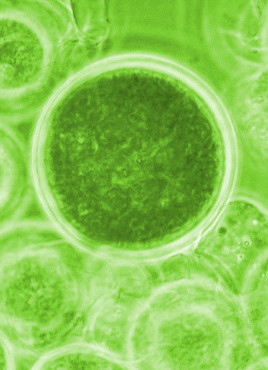Algae-powered CPU success
 British researchers have used algae to power a computer processor.
British researchers have used algae to power a computer processor.
Experts say electronic devices may one day be powered by algae.
University of Cambridge researchers have worked with chip giant Arm to use a widespread species of blue-green algae to power a microprocessor continuously for a year - and it is still going. All the algae required was ambient light and water.
The system, similar in size to an AA battery, could be used as a reliable and renewable way to power small devices.
It works by utilising the natural harvesting of energy from the sun through photosynthesis by the non-toxic algae called Synechocystis. The process generates a tiny electrical current, which interacts with an aluminium electrode to power a microprocessor.
The researchers say it could easily be replicated hundreds of thousands of times to power large numbers of small devices as part of the ‘Internet of Things’, since the system is made of common, cheap and largely recyclable materials.
They believe it could prove particularly useful in off-grid situations or remote locations, where small amounts of power can be very beneficial.
“The growing Internet of Things needs an increasing amount of power, and we think this will have to come from systems that can generate energy, rather than simply store it like batteries,” says Prof Christopher Howe in the University of Cambridge’s Department of Biochemistry.
“Our photosynthetic device doesn’t run down the way a battery does because it’s continually using light as the energy source.”
The device powered an Arm Cortex M0+ - a microprocessor used widely in small electronic devices. They tested it in a domestic environment and in semi-outdoor conditions under natural light and temperature fluctuations,
After six months of continuous power production, the results were submitted for publication.
“We were impressed by how consistently the system worked over a long period of time – we thought it might stop after a few weeks but it just kept going,” says Dr Paolo Bombelli, also from the Department of Biochemistry.
The algae creates its own food as it photosynthesises and while the process requires light, the researchers think the device can continue producing power during periods of darkness. This is thought to be because the algae processes some of its food when there is no light, continuing to generate an electrical current.
More details have been published in the journal Energy & Environmental Science.








 Print
Print